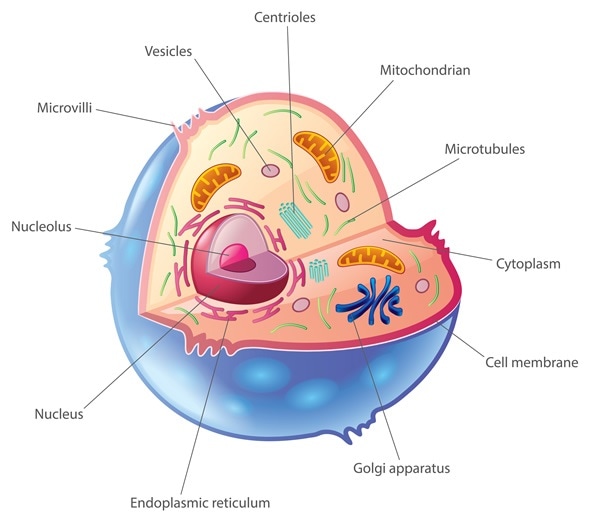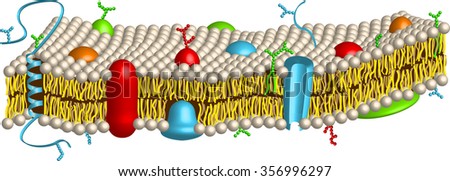
This week in AP Biology we focused on the structure and support mechanisms of the cell. The organized structures within the cell are called organelles – each one is specific in helping the cell to function as a working group.
The first organelle we looked into was the cytoskeleton. The cytoskeleton is a network of structural proteins that are connected in the cytoplasm. Microtubules are found in the cytoskeleton and are made up of tubulin monomers which are used as the transportation system for vesicles. Microfilaments and intermediate filaments are also found in the cytoskeleton, which are both made up of actin monomers and help with cell division and protection of the nucleus. The cytoskeletons function is to help with the movement, protection, and structure of a the cell.
 The cell membrane is made up of a phospholipid bilayer with proteins, otherwise known as the “Fluid mosaic model”. This is like the security gate into the cell, helping with boundary, transportation, and communication. The phospholipid found in the membrane is amphipathic, meaning it is both polar and non polar, and create a semi-permeable membrane. The membrane proteins include both integral and peripheral proteins. Integral penetrate both bilayers, while peripheral proteins don’t penetrate but are hovering on top. These assist in creating polarity. The Cilia and Flagella are motility related extensions of cytoskeletal proteins. The centrosome is the microtubule and is only found in animal cells.
The cell membrane is made up of a phospholipid bilayer with proteins, otherwise known as the “Fluid mosaic model”. This is like the security gate into the cell, helping with boundary, transportation, and communication. The phospholipid found in the membrane is amphipathic, meaning it is both polar and non polar, and create a semi-permeable membrane. The membrane proteins include both integral and peripheral proteins. Integral penetrate both bilayers, while peripheral proteins don’t penetrate but are hovering on top. These assist in creating polarity. The Cilia and Flagella are motility related extensions of cytoskeletal proteins. The centrosome is the microtubule and is only found in animal cells.

Cholesterol is a steroid lipid that act as a “temperature buffer” to help with membrane fluidity. Integral proteins span the bi-layer with domains and function with signal translation. Glycoproteins also span the bi-layer but they have short polysaccarides vesicles projecting which serve as identifying maker in cellular populations. Cell walls, on the other hand, are only contained within plant cells. These are too rigid to withstand the turgid pressure for animal cells, so in place we use an extracellular matrix. The “ECM” is a network of connective proteins and protoglycen molecules outside of the cell membrane. This assists in the cell anchorage and communication.
This week we learned much more about the specific functions of organelles, which was useful in figuring out more of the cellular purpose. I’m excited to learn about more organelles such as the mitochondria and Golgi apparatus!
Websites:
Learn About Organelles – ThoughtCo
Cell Membranes | Learn Science at Scitable – Nature




